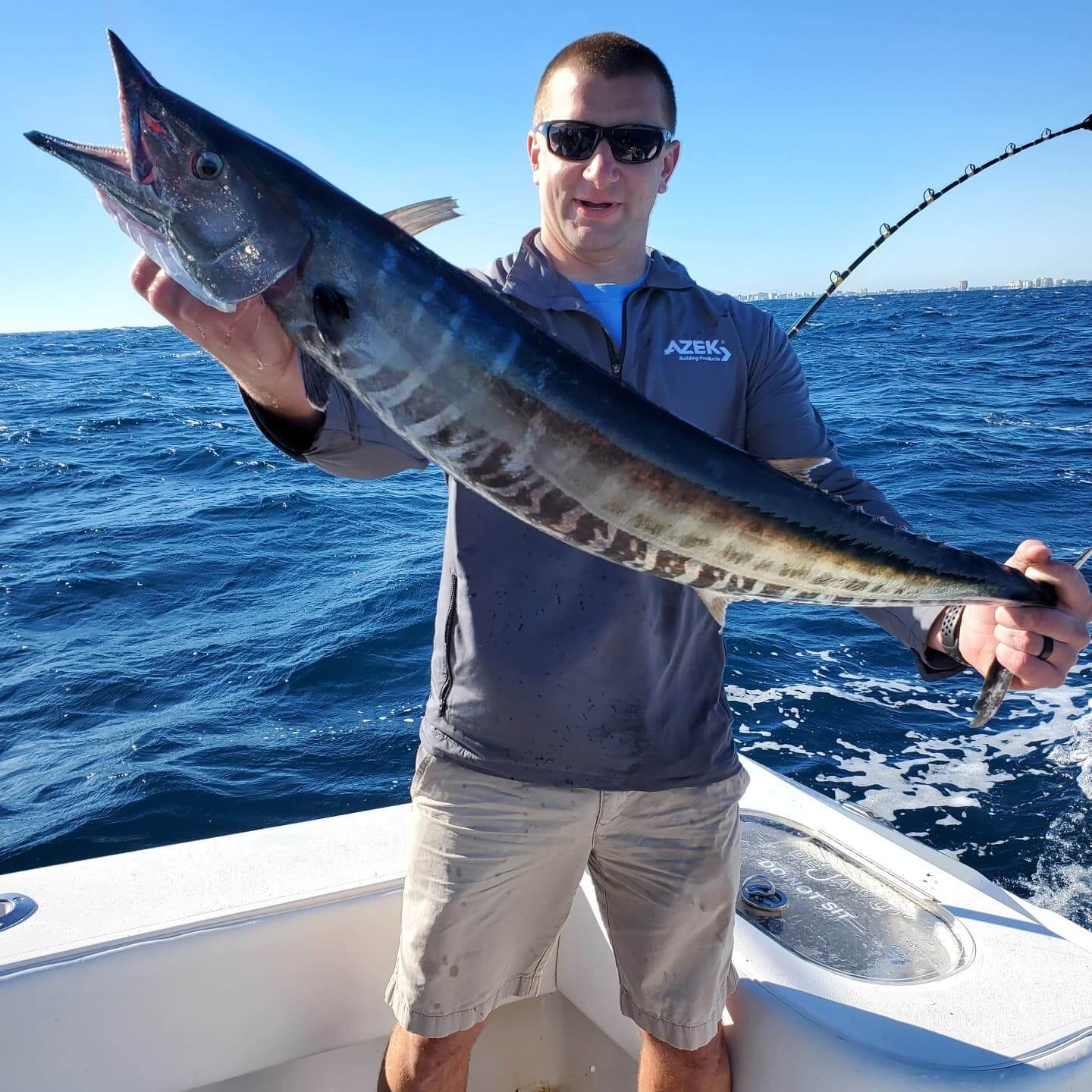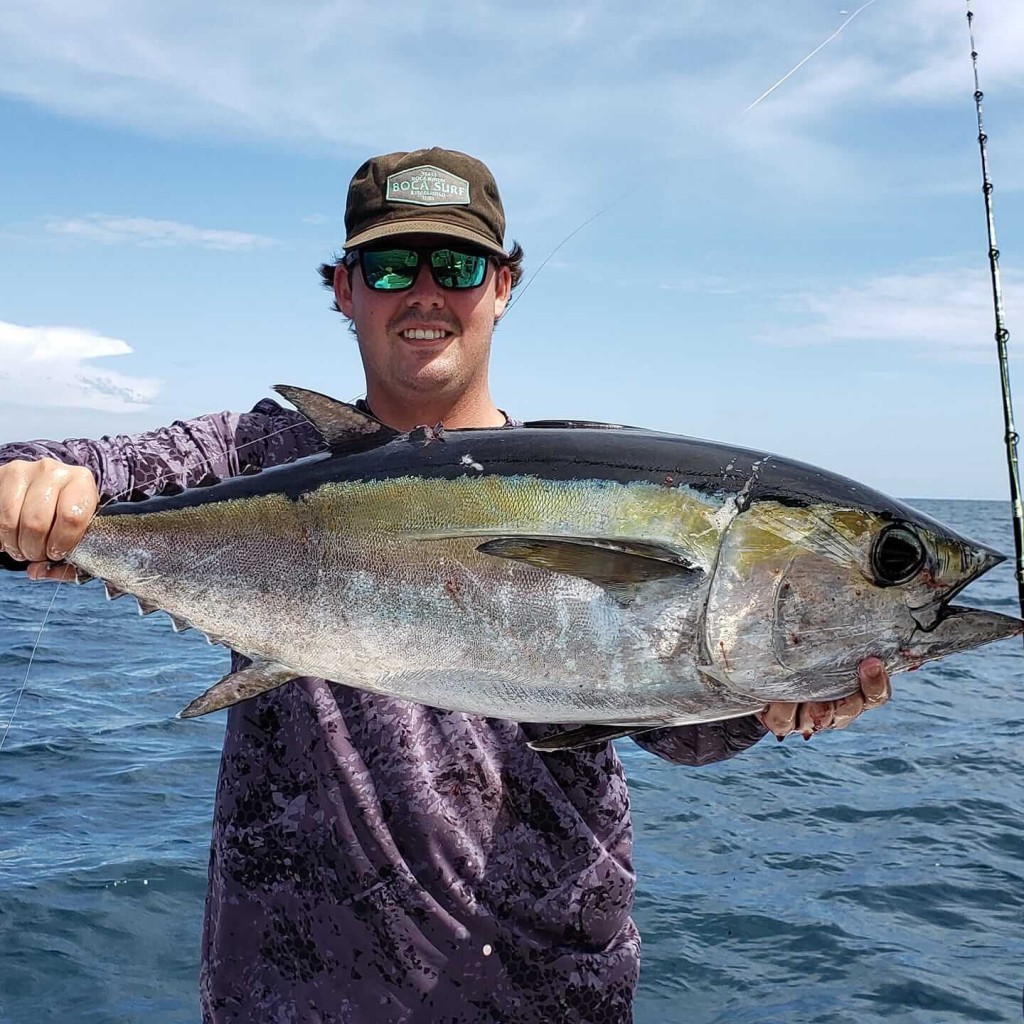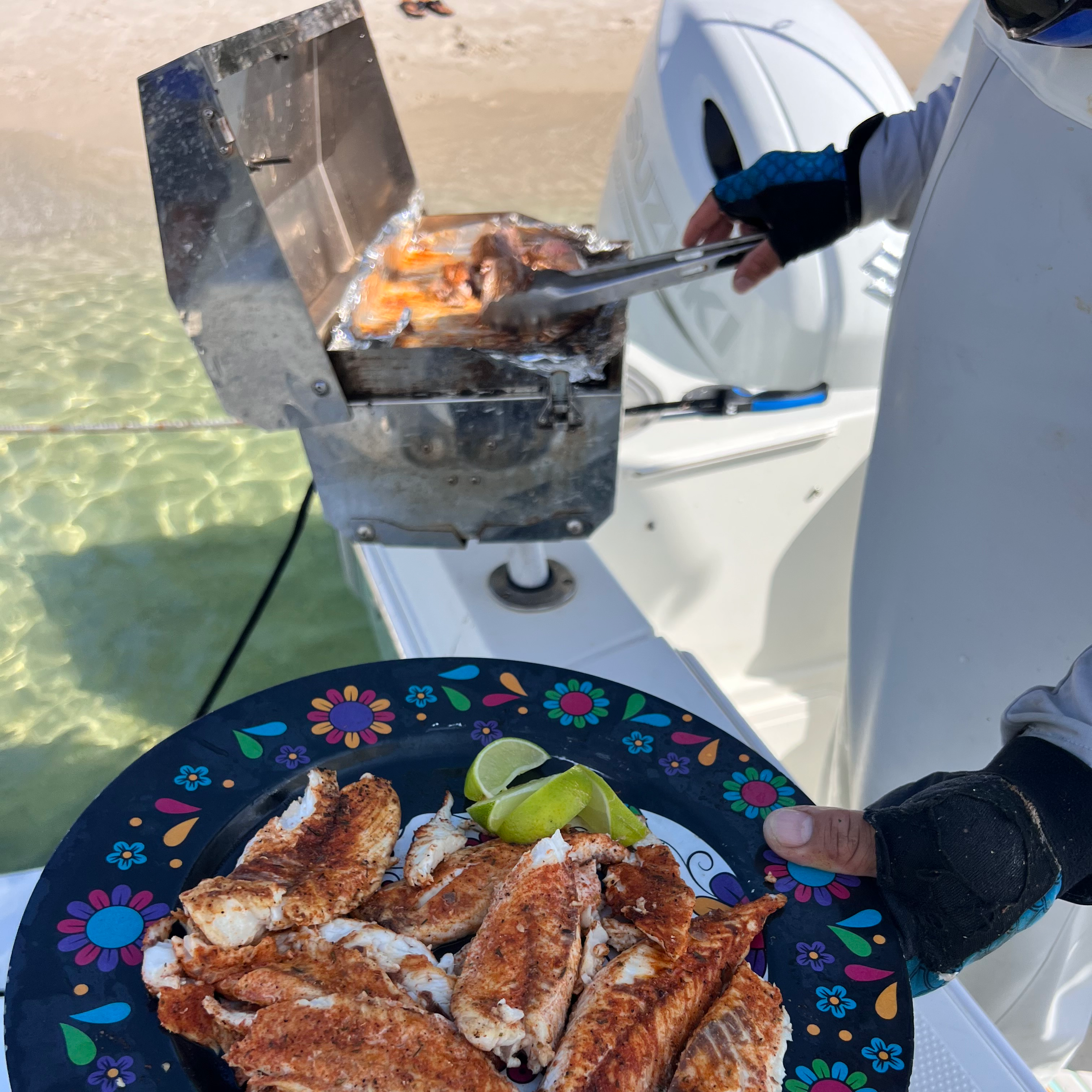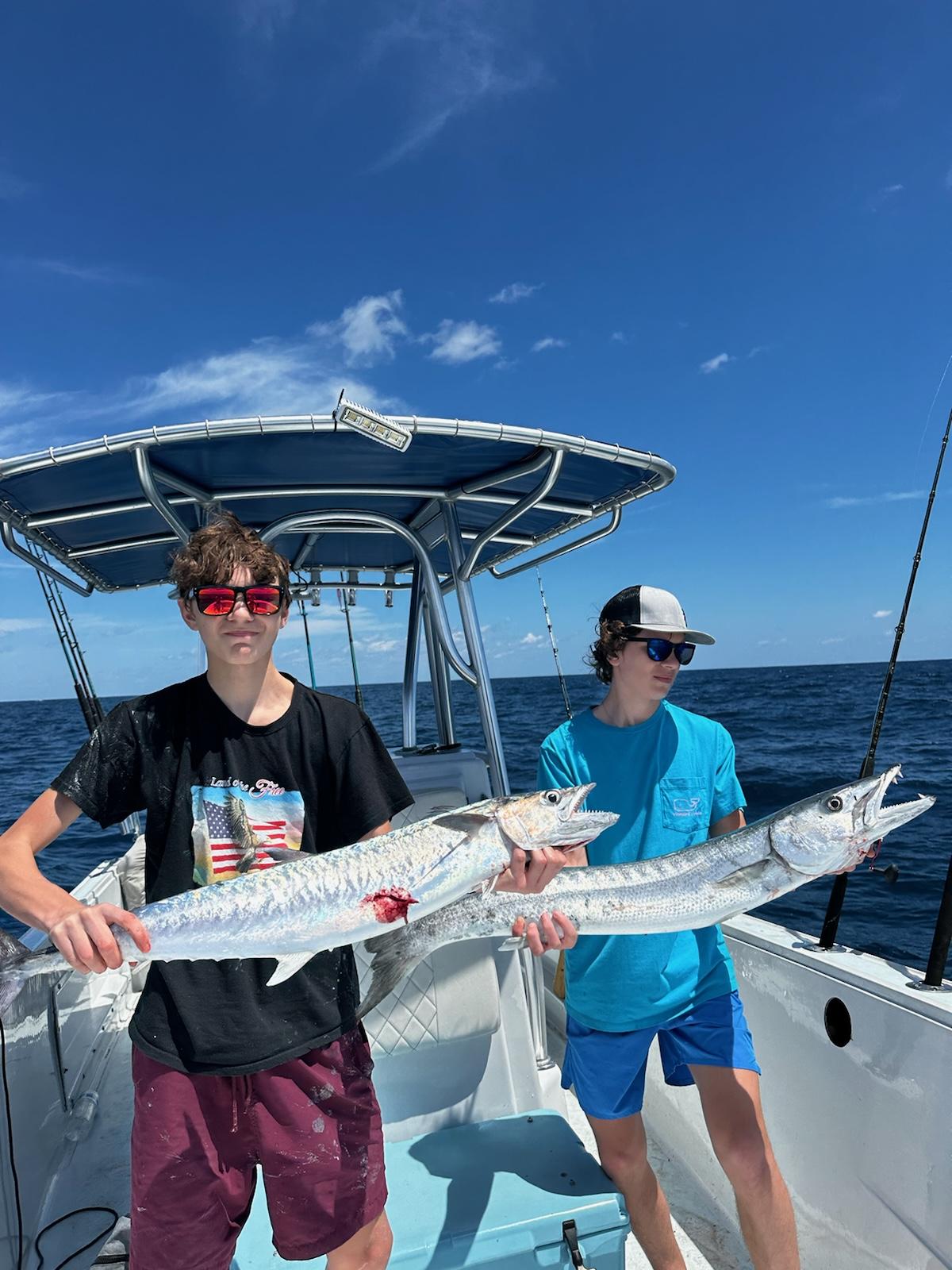Nearshore Fishing in Pompano Beach
South FL Nearshore Reef Fishing
Deep Sea, Nearshore, Jetty in Pompano Beach
#1 Offshore Charter
Deep Sea, Nearshore Fishing in Pompano Beach
4-8 Hours Fishing Trip
Nearshore Fishing in Pompano Beach
Pompano Beach Slam
Deep Sea Fishing in Pompano Beach
Full Day Offshore - 53' Hatteras
Deep Sea Fishing in Pompano Beach
Half Day Offshore Fishing
Deep Sea, Nearshore, Jetty in Miami
Catch And Cook Sashimi/Grilled Fish
Deep Sea, Nearshore, Jetty in Miami
Miami Sport Fishing 🎣
Deep Sea, Nearshore, Jetty in Miami
Miami Sport Fishing 🎣
Deep Sea, Nearshore, Jetty in Pompano Beach
#1 Family & Friends Sport Fishing
We started Captain Experiences to make it easy to book fishing and hunting guides around the world. With over 2,000 Damn Good Guides, our platform makes finding and booking a trip seamless. Head here to check out our trips.
When it comes to enjoying the abundant fishing opportunities in Pompano Beach, Florida, it's essential to familiarize yourself with the rules and regulations that govern recreational fishing. These regulations are in place to ensure the sustainability of fish populations, protect the marine ecosystem, and maintain a balance between fishing and conservation. In this blog, we'll guide you through the key fishing rules and regulations in Pompano Beach.

Licensing Requirements for Pompano Beach, FL
Before casting your line in Pompano Beach's waters, it's crucial to obtain the necessary fishing license. Florida requires anglers aged 16 and older to possess a valid fishing license, which can be obtained online through the Florida Fish and Wildlife Conservation Commission (FWC) website or at authorized retailers. Various types of licenses are available, including annual and one-day options for both residents and non-residents. Additionally, there are special licenses for seniors and military personnel. Keep your fishing license with you at all times while fishing to avoid any legal issues.
Bag and Size Limits at Pompano Beach
To protect fish populations and ensure sustainable fishing, bag and size limits are enforced in Pompano Beach. Bag limits refer to the number of fish an angler can harvest within a single day, while size limits specify the minimum size at which a fish can be legally kept. Here are some of the specific bag and size limits for common fish species in Pompano Beach:
Red Snapper
The bag limit is set at 2 per day when fishing in federal waters, and the minimum size limit is 16 inches.
Yellowtail Snapper

These fish have a bag limit of 10 per day, which falls within the aggregate snapper bag limit, and a minimum size requirement of 12 inches.
Mutton Snapper
Regulations allow a bag limit of 5 per day within the aggregate snapper bag limit and a minimum size of 18 inches.
Black Grouper
Fishing for Black Grouper is limited to 1 per day within the aggregate grouper bag limit, with a minimum size of 24 inches.
Mahi-Mahi
Anglers can catch up to 10 per day, and each fish must be at least 20 inches fork length. Read our Pompano Beach Mahi Mahi blog for more information.
Protected Species and Closures
Certain fish species in Pompano Beach's waters are protected due to conservation concerns or legal restrictions. It’s essential to familiarize yourself with the protected species list to avoid unintentional harm. Protected species and those with specific regulations include:
Tarpon
Special regulations apply, including mandatory reporting of any tarpon caught that are 40 inches or longer.
Sawfish
All sawfish are protected, and any catch must be released immediately.
Goliath Grouper
Harvesting this species is prohibited; any incidental catch must be released immediately.
Reporting and Recording

Understanding and complying with fishing rules and regulations is crucial for every angler in Pompano Beach. By obtaining the appropriate fishing license, respecting bag and size limits, being aware of protected species and closures, following gear restrictions, and practicing responsible catch-and-release techniques, you can contribute to the preservation of the marine ecosystem while enjoying the thrill of fishing. Remember, responsible angling ensures that future generations can continue to enjoy the bountiful fishing opportunities Pompano Beach has to offer. For more information, read our Pompano Beach updated fishing guide.
Gavin Abbott
Updated on November 7, 2024

April 26, 2022

October 26, 2020

May 13, 2024

November 15, 2023

January 7, 2022
Related Articles
August 1, 2024
June 6, 2024
December 20, 2021
Featured Locations
- Fishing Charters Near Me
- Austin Fishing Guides
- Biloxi Fishing Charters
- Bradenton Fishing Charters
- Cabo San Lucas Fishing Charters
- Cancun Fishing Charters
- Cape Coral Fishing Charters
- Charleston Fishing Charters
- Clearwater Fishing Charters
- Corpus Christi Fishing Charters
- Crystal River Fishing Charters
- Dauphin Island Fishing Charters
- Daytona Beach Fishing Charters
- Destin Fishing Charters
- Fort Lauderdale Fishing Charters
- Fort Myers Fishing Charters
- Fort Walton Beach Fishing Charters
- Galveston Fishing Charters
- Gulf Shores Fishing Charters
- Hatteras Fishing Charters
- Hilton Head Fishing Charters
- Islamorada Fishing Charters
- Jacksonville Fishing Charters
- Jupiter Fishing Charters
- Key Largo Fishing Charters
- Key West Fishing Charters
- Kona Fishing Charters
- Lakeside Marblehead Fishing Charters
- Marathon Fishing Charters
- Marco Island Fishing Charters
- Miami Fishing Charters
- Montauk Fishing Charters
- Morehead City Fishing Charters
- Naples Fishing Charters
- New Orleans Fishing Charters
- New Smyrna Beach Fishing Charters
- Ocean City Fishing Charters
- Orange Beach Fishing Charters
- Panama City Beach Fishing Charters
- Pensacola Fishing Charters
- Pompano Beach Fishing Charters
- Port Aransas Fishing Charters
- Port Orange Fishing Charters
- Rockport Fishing Charters
- San Diego Fishing Charters
- San Juan Fishing Charters
- Sarasota Fishing Charters
- South Padre Island Fishing Charters
- St. Augustine Fishing Charters
- St. Petersburg Fishing Charters
- Tampa Fishing Charters
- Tarpon Springs Fishing Charters
- Venice Fishing Charters
- Virginia Beach Fishing Charters
- West Palm Beach Fishing Charters
- Wilmington Fishing Charters
- Wrightsville Beach Fishing Charters
































